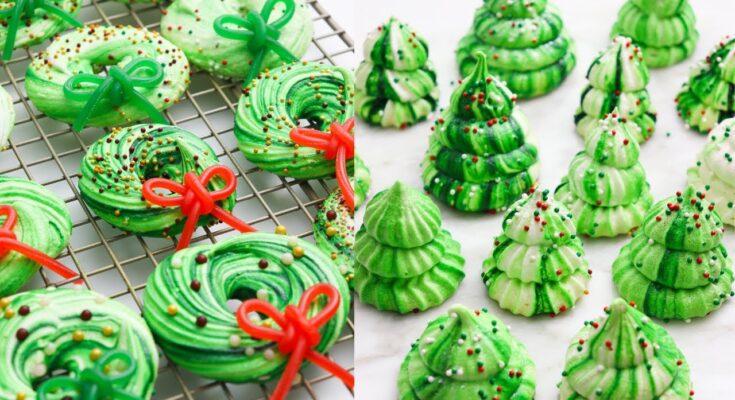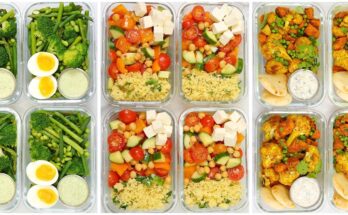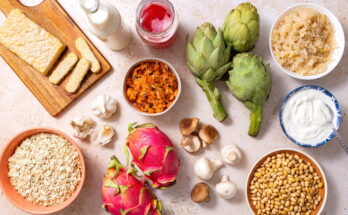Meringue Cookies Recipe: Meringue cookies are the culinary equivalent of a cloud—light, airy, and sweet. Made mainly from whipped egg whites and sugar, these cookies are known for their crispy exterior and melt-in-your-mouth interior. With roots in European baking traditions, particularly French, Swiss, and Italian cuisines, meringues have made their way into hearts and kitchens worldwide. You’ll often see them shaped into swirls or kisses, perfect for tea parties, holiday gatherings, or a simple sweet craving.
Unlike traditional cookies, meringues require no flour or leavening agents. This makes them naturally gluten-free and lower in fat, although still high in sugar. Whether you enjoy them plain, dipped in chocolate, or flavored with extracts like vanilla or peppermint, meringue cookies are endlessly customizable and always a delight.
Why You’ll Love This Recipe
What makes this meringue cookie recipe a total winner? It’s foolproof, beginner-friendly, and delivers consistently airy, crisp cookies every time. You only need a handful of ingredients and some patience. These cookies look fancy but are surprisingly simple to make. You’ll love how the ingredients come together with just a little elbow grease—or a stand mixer!
Another bonus? They’re versatile. Add food coloring for a festive touch, or pipe them into fun shapes. You can even sandwich them with ganache or jam. They’re also ideal for using up leftover egg whites from other recipes.
Ingredients Needed
Key Ingredients Breakdown
Here’s what you’ll need to make a basic batch of meringue cookies:
- Egg Whites (4 large): The star of the show, egg whites whip into a frothy meringue that becomes the cookie’s base.
- Granulated Sugar (1 cup): Stabilizes the egg whites and gives the cookies their signature sweetness and glossy texture.
- Cream of Tartar (¼ tsp): Helps stabilize the egg whites and ensures a stiff, glossy meringue.
- Vanilla Extract (1 tsp): Adds a subtle sweetness and depth of flavor.
- Optional Add-ins: Chocolate chips, food coloring, peppermint extract, or cocoa powder for variety.
Each ingredient plays a specific role in creating the delicate structure of the meringue. Skimping on or substituting these may change the outcome, so it’s best to follow the list precisely—at least the first time.
Tips for Selecting the Best Ingredients
- Eggs: Use room temperature eggs for better volume. Fresher eggs are harder to whip, so slightly older eggs work better.
- Sugar: Stick to superfine granulated sugar if possible. It dissolves more quickly into the egg whites, resulting in a smoother texture.
- Flavorings: Always opt for pure vanilla extract over imitation for the best taste.
- Add-ins: When using flavorings or food coloring, introduce them gently and near the end of the whipping process to maintain structure.
Using high-quality, fresh ingredients makes a noticeable difference. A great meringue starts with great basics.
Tools and Equipment Required
Must-Have Kitchen Tools
To make these cookies, you’ll need a few essential tools:
- Electric Mixer (stand or handheld): Whipping egg whites manually is not for the faint-hearted. An electric mixer makes the process much faster and more consistent.
- Mixing Bowls (preferably glass or metal): Avoid plastic bowls, which can hold onto grease and prevent the whites from whipping properly.
- Measuring Cups and Spoons: Accuracy matters in baking.
- Baking Sheet and Parchment Paper: Essential for even baking and easy cleanup.
- Piping Bag with Tip: Optional but great for shaping cookies beautifully.
These tools not only make your life easier but also improve the quality of your cookies. A stiff, glossy meringue requires speed and consistency—something a good mixer delivers in spades.
Optional Equipment to Enhance the Experience
Want to take your meringue-making to the next level? Consider these extras:
- Oven Thermometer: Meringues are sensitive to heat. An accurate oven temperature is key to preventing cracks and browning.
- Silicone Baking Mats: Reusable and non-stick, they’re a green alternative to parchment paper.
- Food Scale: For precise measurements, especially when scaling the recipe.
Investing in these isn’t necessary for your first try, but if you find yourself baking often, they’re worth having on hand.
Preparing the Perfect Meringue
Separating Eggs Like a Pro
This is where it all begins. Egg whites must be completely free of yolk and any grease. Even a tiny drop can prevent them from whipping. Here’s how to separate eggs without a mess:
- Crack the egg over a clean bowl, and gently transfer the yolk back and forth between the shell halves, letting the white fall into the bowl.
- Do each egg in a separate bowl before adding it to the main mixing bowl. This way, if one yolk breaks, it won’t ruin the entire batch.
- Use cold eggs for easier separation, then let the whites come to room temperature for better volume when whipping.
A clean separation ensures the meringue will whip up beautifully, giving you that signature fluffiness.
Beating the Egg Whites to Perfection
This step is where the magic happens. Follow these steps to create the perfect meringue:
- Start slow: Whip the egg whites on low speed until they become frothy.
- Add cream of tartar: This stabilizes the foam.
- Increase speed and gradually add sugar, one tablespoon at a time. This helps dissolve the sugar fully.
- Look for stiff peaks: When you lift the beater, the peaks should stand straight up without collapsing.
Once you reach this stage, stop beating. Over-whipping can dry out the meringue and make it grainy, which affects the cookie’s texture.
Shaping Your Meringue Cookies
Perfectly shaped meringues aren’t just beautiful—they bake more evenly and taste better. Let’s explore two common methods: piping and spooning.
Piping Meringue into Kisses or Shells
Piping gives you those classic meringue shapes—swirls like shells or kisses that look elegant. Here’s the step-by-step:
- Choose a piping bag and tip
Use a large star or round tip depending on your desired look. A star tip gives pretty ridges, while a round tip yields smooth spheres. - Fill the bag properly
Spoon your meringue into the bag as far down as possible. Twist the top shut to keep the meringue from spilling out. Hold the bag like you’re holding a microphone. - Pipe with consistency
Gently squeeze from the top, keeping even pressure. Pipe swirls by starting in the center and spiraling outward. Lift the bag quickly and straight to finish with a clean peak. - Even spacing
Leave 1–2 inches between kisses—they puff a bit when baking. - Add extras (optional)
Sprinkle chocolate chips, chopped nuts, or a dusting of cocoa just before baking for decoration that won’t bleed or melt.
Spoon Method: Rustic and Charming
No piping bag? No problem. The spoon method is easy and gives a cute, homespun look:
- Scoop a dollop
Use two spoons: scoop meringue with one and slide it onto the parchment with the other. - Shape as needed
Use the back of the spoon to slightly swirl or flatten the top for a macaroon-like effect. - Space them well
Same spacing rules apply—airy cookies mean space to breathe in the oven. - Top if desired
Add sprinkles or drizzle while still raw.
Why it matters: Piped cookies look fancy, but spooned ones are forgiving and quick, with no special tools required and equally delicious results.
Baking Your Meringues to Perfection
A gentle, low-temperature bake is what turns glossy meringue into crisp, cloudlike cookies. Let’s dig into the how and why.
Ideal Oven Temperature and Time
- Common range: 200–225 °F (93–107 °C). This low heat dries them out rather than browning or cracking.
- Baking time: 1–2 hours depending on size—small kisses take about an hour, larger nests up to 2 hours.
- Optional cooling: Turn the oven off, crack the door, and let the cookies sit for another hour to dry thoroughly inside.
Troubleshooting Common Issues
- Brown or yellow edges: Oven too hot. Invest in an oven thermometer to check.
- Sticky centers: Oven too cool or not baked/dried long enough. Extend the bake by 15–30 minutes or let them stay in the shut-off oven longer.
- Cracked tops: Often normal—some crack adds charm—but if excessive, bake at a lower temp or don’t open the oven mid-bake.
- Color changes: Humidity can darken meringues; bake on a dry day and seal them once fully cooled.
Testing for Doneness
- Touch test: They should feel firm and release easily from parchment.
- Tap test: Meringues should sound hollow when tapped.
- Taste test: Crunchy outside, still slightly chewy inside is ideal for nests; completely crisp is better for kisses and shells.
Flavor Variations to Jazz Up Your Meringues
One of the best things about meringue cookies is how easy it is to personalize them. Here are some flavor twists worth trying:
Classic Vanilla or Almond
- Pure vanilla extract (1 tsp): Subtle sweetness that highlights the eggy base.
- Almond extract (¼ tsp): Stronger punch—use sparingly for balance.
Chocolate or Cocoa
- Dutch-process cocoa powder (1 Tbsp): Fold into your meringue at medium peaks for mocha swirls.
- Mini chocolate chips: Fold in at the end before piping for studded kisses.
Citrus Zest & Extracts
- Lemon or orange zest (½ tsp finely grated): Brightens the flavor without adding liquid.
- Lemon extract: Use ½ tsp carefully; it’s potent. Add near the end of whipping for a tangy twist.
Mint or Peppermint
- Peppermint extract (¼ tsp): Fun for holidays—add after medium peaks so you don’t deflate the mixture.
Add-ons & Swirls
- Freeze-dried fruit powder: Gently fold in 1 Tbsp for natural color and flavor.
- Food coloring: Add gel coloring after medium peaks and swirl gently.
Each flavor variation is simple to implement—just choose your twist, add it at the right moment during whipping, and bake as usual.
Storing and Serving Your Meringue Cookies
Even though they’re delicate, properly stored meringues can stay crisp for weeks—if you handle them right.
How to Store
- Cool completely before storing to avoid moisture buildup.
- Use airtight containers lined with parchment. Avoid plastic wrap directly on top, which can encourage sweating.
- Layer with parchment paper to prevent sticking and chipping.
- Add a silica packet or rice in the container (sealed in muslin) to absorb stray moisture.
How Long Will They Last?
- Room temperature: Up to 2 weeks, maybe longer in dry climates.
- Re-crisping stale meringues: Bake at 200 °F (93 °C) for 10–15 minutes to restore crispness before serving.
Serving Suggestions
- Alone: Perfect with tea, coffee, or as a light dessert.
- Sandwich-style: Pair two cookies with fillings like whipped cream, chocolate ganache, jam, or Nutella.
- As toppings: Crumble gently over ice cream, mousse, or pavlova for extra texture.
- Mini cheesecakes: Use a meringue base in mini jars, top with whipped cream and berries for a no-bake show-stopper.
Meringue Troubleshooting Guide
Even experienced bakers hit a snag now and then. Here are solutions to the most common meringue mishaps:
My meringues are flat—what went wrong?
- Possibly added sugar too quickly or didn’t whip to medium peaks.
- Try folding sugar in more gradually next time.
- Ensure your bowl and beaters are completely grease-free.
They’re chewy in the center
- Oven was likely too cool or not baked long enough.
- Bake longer or dry them in a cooled oven.
They browned on the edges
- Oven temperature too high; lower it by 10–15 °F (5–8 °C).
- Use an oven thermometer to ensure accuracy.
They cracked and collapsed
- Over-whipped—dry whites shrink during baking; reduce beat time.
- Humidity—bake on drier days or use a dehumidifier in your kitchen.
They stuck to the pan
- Parchment paper isn’t fully dry—make sure there’s no moisture.
- Let them cool completely before lifting—they’ll release easier.
Decorating Your Meringue Cookies
Decorating meringue cookies is where you can truly get creative. While their natural white sheen is elegant on its own, adding flair through color, design, or toppings takes them from basic to breathtaking.
Color Them Beautifully
To add color to meringue without affecting texture:
- Use gel or powdered food coloring—never liquid, as it can water down your meringue and cause collapse.
- Swirl color into the piping bag before adding the meringue for a stunning marbled effect.
- Mix in color during the soft-peak stage for uniform hue throughout.
Popular color combos:
- Pastel pink or baby blue for baby showers
- Red and green for holidays
- Purple or orange for Halloween
- Rainbow meringues for pride celebrations
Add Edible Glitter or Sprinkles
Before baking:
- Top with sanding sugar or edible glitter for sparkle.
- Use sprinkles sparingly—too many can weigh the meringue down.
After baking:
- Drizzle melted chocolate across the tops.
- Dip bottoms in dark chocolate and let set on parchment.
Piping Techniques to Impress
If you’re using a piping bag, shape ideas include:
- Roses: Pipe in a swirl with a star tip.
- Shells: Short, quick presses and pulls.
- Stars and kisses: Hold the bag vertically and press down, then pull up swiftly.
Each decorative element enhances not only the look but often the taste, and these details are especially appreciated during events or when gifting.
Meringue Cookies for Special Occasions
Meringue cookies are the MVP of any party dessert table—light, elegant, and endlessly adaptable. Here’s how to tailor them for different events:
Holiday Favorites
- Christmas: Swirl with red and green coloring, and top with crushed peppermint.
- Valentine’s Day: Pink hearts or kisses with heart-shaped sprinkles.
- Easter: Pastel colors with white chocolate drizzle and edible pearls.
Weddings and Baby Showers
- White meringues with gold leaf accents offer a classy touch.
- Tinted blue or pink for baby showers, piped into mini rosebuds or rattles.
- Use clear treat bags and ribbons to package as wedding favors.
Birthdays and Parties
- Make rainbow mini meringues in every color of the party theme.
- Add letters or numbers by piping alphabets or years onto cookies.
The beauty of meringue cookies lies in their ability to become chameleons—perfect for any theme, any time of year.
Healthier Meringue Alternatives
Trying to lighten up your meringue game? Here are some ideas for reducing sugar or swapping out ingredients:
Sugar Alternatives
- Stevia or monk fruit blends: Look for baking versions that match sugar’s sweetness and texture.
- Erythritol: A sugar alcohol that whips up decently but may affect crispness.
- Honey or agave: These can be used sparingly but might deflate your meringue—best added at the very end.
Note: Sugar also helps stabilize meringue, so alternatives may compromise structure.
Dairy-Free and Gluten-Free by Default
- Meringue cookies are naturally free of flour and dairy, making them a win for many dietary needs.
Low-Calorie Options
- Just egg whites, sweetener, and extract = a cookie under 20 calories.
- Ideal for those on keto, paleo, or calorie-counting diets.
Experimenting with healthier swaps can make meringues accessible for more people without sacrificing the joy of a sweet treat.
Kids and Meringue: A Fun Baking Project
Looking for a fun and safe kitchen activity with kids? Meringue cookies are perfect:
Why Kids Love Them
- The mixing and whipping stages are fun to watch—it’s like magic!
- They get to color and decorate them like mini art projects.
- Meringue cookies don’t need sharp tools or hot pans (until the baking stage).
Tips for Safe Baking with Kids
- Let them crack and separate eggs with assistance.
- Use hand mixers on low settings and show them how peaks form.
- Allow them to pipe silly shapes or letters—they’ll love seeing them bake up.
- Supervise oven use, but let them help with storage and tasting.
Meringue cookies turn baking into a science experiment meets edible craft time—perfect for budding little chefs.
Wrapping and Gifting Meringue Cookies
These cookies are delicate but gift-worthy with the right packaging.
Presentation Ideas
- Use glass jars with ribbon for rustic appeal.
- Clear treat bags with custom labels make adorable party favors.
- Small tins or boxes lined with parchment protect the cookies in transit.
Shipping Meringues
If you’re sending cookies by mail:
- Wrap each layer in parchment paper.
- Place in a sturdy, well-padded box.
- Label as “fragile” and avoid during humid seasons.
Homemade Gift Basket Ideas
- Pair with loose-leaf tea, cocoa mix, or coffee beans.
- Add homemade jam or lemon curd as a dipping option.
- Include recipe cards or instructions to re-crisp them.
Thoughtfully packaged meringue cookies are a charming and heartfelt gift—perfect for holidays, birthdays, or just because.
FAQs about Meringue Cookies Recipe
Q1: Why did my meringue cookies turn out chewy instead of crispy?
A chewy texture often means the cookies were underbaked or exposed to humidity. Bake them low and slow, then let them cool in the oven with the door slightly ajar to dry out completely.
Q2: Can I make meringue cookies without cream of tartar?
Yes, but cream of tartar helps stabilize the egg whites. If unavailable, use a small amount of lemon juice or white vinegar as a substitute for similar results.
Q3: How long can I store meringue cookies?
Store meringue cookies in an airtight container at room temperature for up to 2 weeks. Avoid refrigeration, as moisture can make them sticky.
Q4: Can I use a hand whisk instead of an electric mixer?
You can, but it requires much more time and effort. An electric mixer ensures stiff peaks form faster and more consistently, which is key for perfect meringue texture.
Q5: What is the best sugar to use for meringue cookies?
Superfine (caster) sugar is ideal because it dissolves quickly. If using regular granulated sugar, add it slowly while beating to ensure a smooth texture without graininess.
Q6: Are meringue cookies gluten-free?
Yes, traditional meringue cookies made with just egg whites and sugar are naturally gluten-free. Always check added flavorings or toppings for gluten content.
Q7: Why did my meringue deflate?
Overbeating or adding sugar too quickly can deflate your meringue. Beat until stiff, glossy peaks form and add sugar gradually to maintain structure.
Q8: Can I color my meringue cookies?
Absolutely! Use gel or powdered food coloring to avoid adding moisture. Mix it in gently after the meringue has reached stiff peaks.
Q9: Can I freeze meringue cookies?
Freezing is not recommended as meringues absorb moisture and lose their crispness. Stick to room temperature storage for best results.
Q10: What can I do with leftover egg yolks?
Use leftover yolks in custards, sauces like hollandaise, homemade mayonnaise, or rich baked goods like pound cake or brioche.
Conclusion
Meringue cookies are a timeless treat, airy and elegant yet deceptively simple to make. With just a few basic ingredients, a bit of technique, and a lot of creativity, you can whip up beautiful clouds of sweetness that suit any occasion. Whether you’re baking for fun, gifting with love, or indulging in a low-calorie snack, these cookies check all the boxes. Once you master the basics, the sky’s the limit—flavor, color, shape, and style are all up to you. Happy baking!



